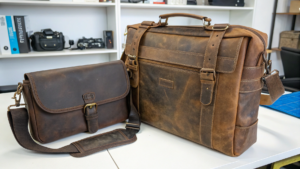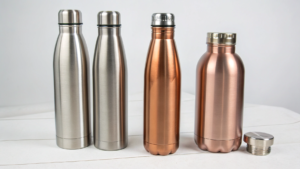Insulated vs. Standard Stainless Steel Bottles: Which Suits Your Branding Needs Best?
Choosing the perfect corporate gift bottle can be tricky. Are you confused by the options like insulated versus standard stainless steel? Let's figure out which type truly aligns with your branding goals.
The best choice depends on your specific needs and budget. Insulated bottles maintain drink temperature for hours, offering higher perceived value. Standard stainless steel bottles are lighter and more budget-friendly but lack insulation.
Selecting the right water bottle for corporate gifting isn't just about quenching thirst; it's about making a statement for your brand. I've seen countless companies deliberate over this choice. Getting it right means your gift gets used and appreciated, keeping your brand top-of-mind. Getting it wrong means it might end up forgotten in a cupboard. Let's dive into the details so you can make an informed decision that enhances your brand image, just like Jacky aims to do for his company.
What are the disadvantages of a standard stainless steel water bottle?
Considering standard stainless steel bottles1 for your branding? Are you worried about potential drawbacks that might reflect poorly on your company? Let's examine the cons to help you decide confidently.
The main downsides are no insulation (drinks get warm or cold quickly), susceptibility to dents which can mar the look, and occasionally an initial metallic taste. They won't keep beverages hot or cold.
When we talk about standard stainless steel bottles, we mean the single-walled versions. While they are a big step up from single-use plastics, they aren't without their limitations, especially when considered as a brand ambassador.
Understanding the Drawbacks
Let's break down these potential issues:
- Lack of Insulation: This is the most significant difference compared to their double-walled cousins. If your recipient fills it with iced water on a typical Singapore morning, it will likely be lukewarm by lunchtime. Similarly, hot beverages cool down fast. This can be disappointing for the user and might not align with a premium brand image. I remember a client who opted for standard bottles for an outdoor event, only to get feedback that the cold drinks didn't stay cold in the heat.
- Denting: Stainless steel is strong, but single-walled bottles are more prone to denting if dropped compared to double-walled insulated ones. A dented bottle might not look as sleek or professional, which could subtly affect the perception of your brand's quality. For someone like Jacky, who values design and quality, this is a key consideration.
- Potential for Metallic Taste: Some users report a slight metallic taste, especially when the bottle is new. This usually fades with proper washing (using baking soda and vinegar often helps), but it's an initial impression that could be negative. Ensuring good quality steel (like 18/8 food-grade) minimizes this.
- Condensation: Cold drinks can cause condensation to form on the outside of a single-walled bottle, making it slippery and potentially leaving water rings on surfaces.
Here’s a quick comparison table:
| Feature | Standard Stainless Steel Bottle | Impact for Branding |
|---|---|---|
| Insulation | None | Lower perceived utility for temp control. |
| Denting | More prone to dents than double-walled | Can affect aesthetic appeal over time. |
| Initial Taste | Possible slight metallic taste | Potential minor negative first impression. |
| Condensation | Yes, with cold drinks | Can be inconvenient for the user. |
| Cost | Generally Lower | More budget-friendly option. |
| Weight | Generally Lighter | Easier to carry when empty. |
Considering these points helps ensure the bottle you choose truly reflects the quality and thoughtfulness Jacky wants his brand to convey.
Are all stainless steel water bottles insulated?
Thinking all stainless steel bottles will keep drinks cold for hours? You might risk disappointing recipients if their drink gets warm quickly. It's crucial to know: not all steel bottles are created equal.
No, definitely not all stainless steel bottles are insulated. Standard bottles feature a single layer of steel. Insulated bottles2 use double-wall construction with a vacuum seal between the layers to effectively maintain beverage temperature.

This is a common point of confusion I see when clients are sourcing corporate gifts. The term "stainless steel bottle" often brings insulation to mind, but the reality is different. Understanding the construction difference is key to choosing the right product for your needs and budget.
Single-Wall vs. Double-Wall Vacuum Insulation
Let's look closer at how they are made and why it matters:
- Single-Wall Stainless Steel Bottles:
- Construction: Made from a single layer of stainless steel.
- Function: Primarily designed to hold liquids safely and be reusable. They offer no significant temperature retention. Heat or cold transfers easily through the single wall.
- Best Use Cases: Good for carrying water at room temperature, short trips, office desk use where immediate consumption is likely, or when budget is the primary constraint. They are generally lighter than insulated bottles.
- Branding Impact: Seen as a practical, eco-friendly alternative to plastic. However, they lack the 'premium' feel associated with temperature control.
- Double-Wall Vacuum Insulated Stainless Steel Bottles:
- Construction: Consist of two layers of stainless steel (an inner and outer wall). The air between these layers is removed, creating a vacuum. This vacuum significantly reduces heat transfer via conduction and convection.
- Function: Excellent at maintaining the temperature of liquids – keeping drinks cold for up to 24 hours or hot for up to 12 hours, depending on the quality and ambient temperature. They also prevent condensation on the outside.
- Best Use Cases: Ideal for outdoor activities, long commutes, keeping drinks hot/cold throughout the workday, or any situation where temperature maintenance enhances the user experience. Perfect for premium corporate gifts.
- Branding Impact: Perceived as higher value due to their enhanced functionality. Associates your brand with quality, performance, and user comfort. This aligns well with Jacky's goal of elevating brand image.
I always advise clients to consider the intended use. If you're gifting to office workers who primarily drink water at their desks, a standard bottle might suffice. But for field staff, frequent travellers, or as a higher-tier gift, the insulated version provides far greater utility and perceived value. The small increase in cost often translates to a much larger increase in appreciation and usage, maximizing your brand exposure.
Is drinking water from a stainless steel bottle a good choice?
Selecting drinkware for your team or clients? Are you concerned about health, safety, and environmental impact? Rest assured, choosing stainless steel is generally an excellent and responsible decision.
Yes, absolutely. Drinking from stainless steel bottles is a very good choice. They are durable, reusable, free from BPA and other harmful chemicals found in some plastics, and highly recyclable. It's healthy and eco-friendly.

Over my years in the gifting industry, the shift towards stainless steel drinkware has been remarkable, and for good reason. Companies and individuals are increasingly conscious of health and environmental factors, and stainless steel addresses many of these concerns effectively.
Why Stainless Steel Shines
Let's explore the key benefits that make stainless steel a preferred material for water bottles:
- Health and Safety:
- BPA-Free: Unlike some plastic bottles, stainless steel (especially food-grade 18/8 or 304) does not contain Bisphenol A (BPA) or other potentially harmful chemicals that can leach into water, especially when exposed to heat.
- Non-Reactive: Stainless steel doesn't react with beverages, preserving the original taste of the water without imparting any metallic or plastic flavor (after an initial wash).
- Durability and Longevity:
- Built to Last: These bottles are tough and resistant to rust, corrosion, and staining. While they can dent (as mentioned earlier, especially single-walled ones), they rarely break, unlike glass.
- Long-Term Use: Their durability means they can be used for years, making them a sustainable investment and reducing the need for replacements. This longevity also means prolonged brand exposure for your corporate gift.
- Eco-Friendliness:
- Reusable: They directly combat the environmental problem of single-use plastic bottles.
- Recyclable: Stainless steel is one of the most recycled materials on the planet. Even at the end of its long life, the bottle can be recycled efficiently. This resonates strongly with Jacky's interest in eco-friendly options.
- Ease of Maintenance:
- Easy to Clean: Most stainless steel bottles are relatively easy to clean with soap and water. Many are even dishwasher safe (though checking manufacturer guidelines is recommended, especially for bottles with exterior paint or prints).
Here’s how stainless steel stacks up against other common materials:
| Feature | Stainless Steel | Plastic (Reusable, e.g., Tritan) | Glass |
|---|---|---|---|
| Chemicals | Generally inert, BPA-free | Look for BPA-free options | Inert, BPA-free |
| Durability | High (can dent) | Moderate (can scratch/crack) | Low (can break easily) |
| Weight | Moderate to High | Low | High |
| Insulation | Available (double-walled) | Poor | Poor |
| Eco-Impact | Highly Reusable & Recyclable | Reusable, recycling varies | Reusable & Recyclable |
| Taste Impact | Neutral (usually) | Potential plastic taste | Neutral |
I recall working with a company launching a wellness initiative. They gifted insulated stainless steel bottles to all employees. It wasn't just a gift; it was a tool encouraging hydration and reducing plastic waste, aligning perfectly with their program's goals and boosting morale. It showed care for both employee health and the environment – a powerful branding message.
Conclusion
Ultimately, choosing between standard and insulated stainless steel bottles depends on your specific goals, budget, and how you want recipients to perceive your brand. Both are safe, sustainable choices offering great branding opportunities.





